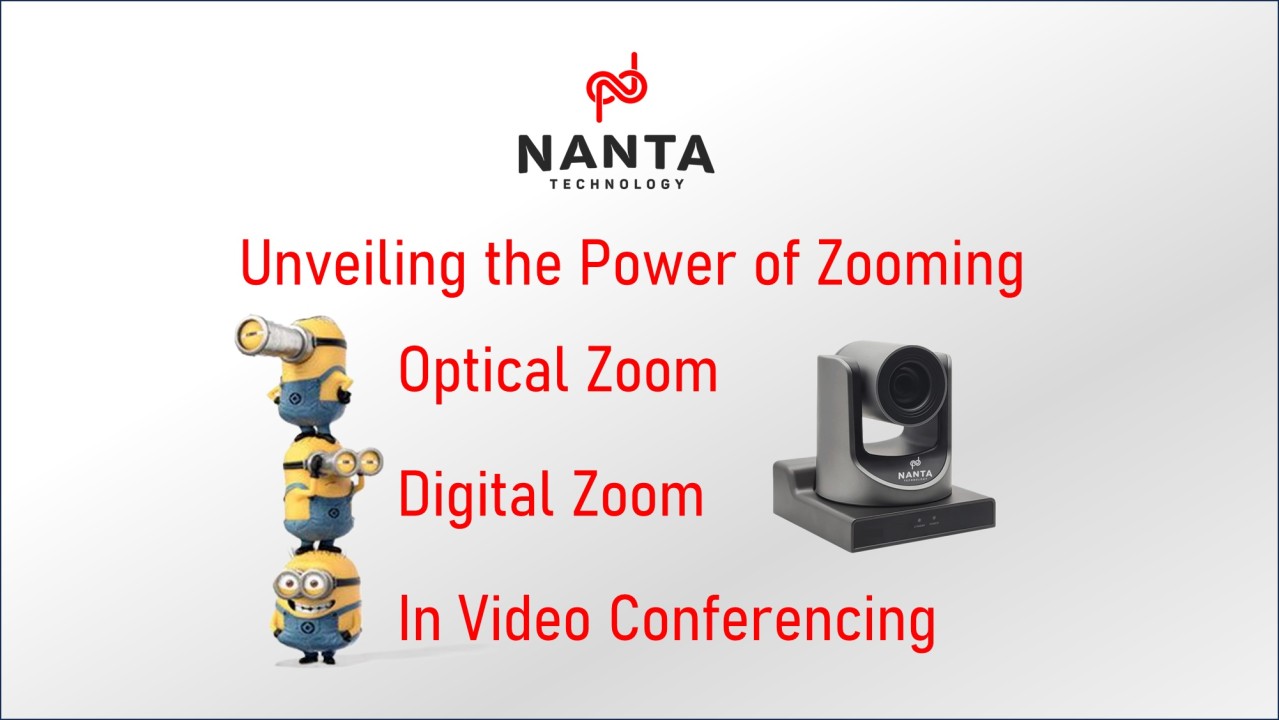
Introduction:
In the dynamic landscape of remote collaboration, video conferencing has become an integral part of our professional lives. As we embrace this virtual realm, the quality of video interactions plays a pivotal role in ensuring effective communication. One key aspect that significantly influences video quality is the zoom functionality, but not all zoom is created equal. In this article, we’ll delve into the two primary types of zoom – optical and digital – and explore their impact on video conferencing equipment.
Optical Zoom: Bringing Clarity to the Forefront
Optical zoom is a technology that uses physical lens adjustments to magnify an image, maintaining crystal-clear details without sacrificing image quality. In the context of video conferencing equipment, this means that the camera lens physically moves to achieve zoom, replicating the experience of getting closer to the subject without compromising on sharpness. This mechanism provides a seamless and natural feel to the zoomed-in image, ensuring that every participant is visible with exceptional clarity.
Advantages of Optical Zoom in Video Conferencing:
- Maintains Image Quality: Optical zoom preserves the image quality by magnifying the actual scene, resulting in sharp and clear visuals.
- Smooth Transitions: The physical movement of the lens allows for smooth and gradual zoom transitions, avoiding abrupt jumps in the video feed.
- Enhanced Detail: Optical zoom brings out intricate details, making it ideal for scenarios where facial expressions and small objects need to be highlighted.
Digital Zoom: The Pitfalls of Pixel Manipulation
Contrary to optical zoom, digital zoom relies on software algorithms to magnify an image. This method involves cropping and enlarging the existing pixels, leading to a loss of image quality as the process progresses. In video conferencing, digital zoom can quickly turn a crisp video feed into a pixelated and distorted image.
Challenges of Digital Zoom in Video Conferencing:
- Loss of Image Quality: As digital zoom relies on pixel interpolation, the image tends to lose sharpness and clarity, especially at higher zoom levels.
- Limited Detail: Fine details can be lost, impacting the ability to discern facial expressions or read small text.
- Potential Disorientation: Rapid digital zooming may cause disorientation for viewers, making it a less favorable choice for professional video conferencing environments.
Choosing the Right Zoom for Video Conferencing Equipment:
When selecting video conferencing equipment, understanding the implications of optical and digital zoom is crucial. While digital zoom may seem convenient, especially in budget-friendly options, the compromise in image quality can significantly impact the overall meeting experience.
Optical zoom stands out as the superior choice for those prioritizing clarity, detail, and a professional video conferencing atmosphere. It ensures that every participant is presented in the best possible light, fostering a more engaging and productive virtual collaboration experience.
By opting for optical zoom, we empower ourselves with the tools needed to bridge the gap between physical and virtual communication seamlessly.
If you’d like to obtain additional information about Video Conferencing Components, or any other AV related products, please don’t hesitate to contact Kairav Adhvaryu at info@nantatech.com or visit the website www.nantatech.com for more details.

